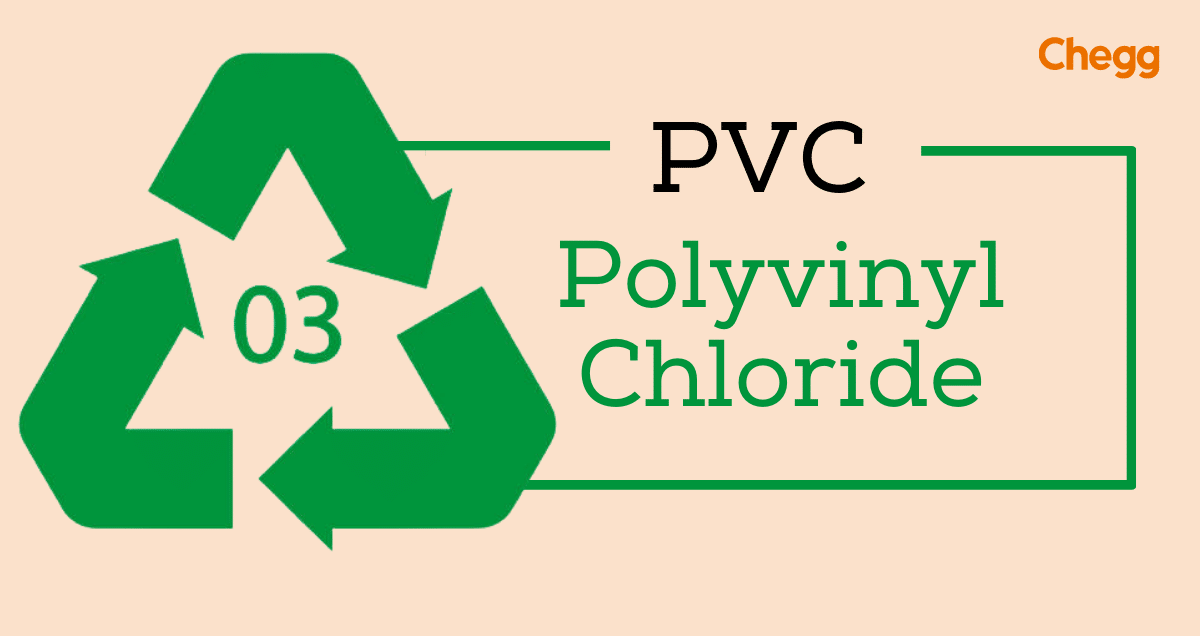Table of Contents
PVC full form is Polyvinyl Chloride, which is a versatile synthetic plastic polymer that has found extensive applications in various industries. Its durability, chemical resistance, and affordability make it a popular choice for numerous products.
Polyvinyl Chloride(PVC full form), was first synthesized in the 19th century, but its commercial production began in the 1920s. Over the years, improvements in manufacturing strategies have improved its quality and expanded its applications. In this article, we will learn more about PVC, its properties, and its characteristics.
Properties and Characteristics of Polyvinyl Chloride (PVC full form)
Polyvinyl Chloride (PVC full form) possesses several desirable properties, making it suitable for a wide range of applications.
| Properties | |
| CAS number | 9002-86-2 |
| Abbreviation | PVC |
| Chemical Formula | C2H3Cln |
| Appearance | White, Brittle, and Solid |
| odor | Odorless |
| Solubility in Water | Insoluble in Water |
1. Durability and strength
PVC is highly long-lasting and has outstanding potency, making it appropriate for long-lasting outcomes.
2. Chemical resistance and stability
PVC resists chemicals, acids, and bases, allowing it to operate in extreme conditions.
3. Thermal and electrical properties
PVC has good thermal insulation effects and is an amazing electrical insulator.
4. Flexibility and versatility
You can prepare PVC to be pliable or stiff, making it versatile for various applications.
Applications of Polyvinyl Chloride (PVC full form)
Numerous industries broadly use PVC because of its versatility and cost-effectiveness.
1. Construction and building materials
PVC is commonly used in tubes, window framings, flooring, and roofing materials because of its durability and low maintenance.
2. Electrical and electronics industry
Employed in insulation, cord sheathing, and wiring, Polyvinyl Chloride (PVC full form) is chosen for its electrical properties and flame retardancy.
3. Healthcare and medical devices
PVC is used in medical tubing, pouches, and Intravenous infusion sets due to its biocompatibility and ease of sterilization.
4. Automotive and Transportation
Polyvinyl Chloride (PVC full form) is used in car interiors, upholstery, and insulation due to its durability and resistance to severe temperatures.
5. Packaging and consumer goods
Packaging materials, inflatable products, and household articles contain PVC because of its flexibility and affordability.
Environmental Considerations
PVC has raised concerns about its impact on the atmosphere, but measures have been taken to improve its sustainability.
PVC’s Impact on the Environment
The production and disposal of PVC can discharge poisonous chemicals and contribute to environmental pollution.
Sustainability initiatives and improvements
Different industries concentrate on decreasing PVC’s environmental influence, such as using alternative plasticizers and improving manufacturing processes.
Recycling and disposal methods
Recycling programs for PVC have been created, and we are promoting proper disposal methods to reduce its impact on the environment.
Polyvinyl Chloride (PVC full form): Advantages and Disadvantages
PVC offers several benefits but also has certain limitations.
Benefits of PVC in various applications
PVC’s low cost, versatility, and durability make it an ideal choice for a wide range of products, providing economic and functional advantages.
Drawbacks and limitations of PVC usage
PVC’s production involves the use of hazardous chemicals, and its disposal poses environmental challenges. It can also release toxic fumes when burned.
Future Trends and Innovations
Ongoing research and development aims to enhance PVC’s properties and explore eco-friendly alternatives.
Advances in PVC technology
Continuous advancements in PVC formulation and manufacturing processes are improving its performance and reducing its environmental impact.
Exploration of bio-based and eco-friendly alternatives
Researchers are investigating the use of bio-based materials and eco-friendly alternatives to PVC to reduce its environmental footprint.
Potential future applications of PVC
PVC’s versatility opens up possibilities for new applications in emerging industries such as renewable energy, 3D printing, and advanced materials.
Conclusion
PVC full form: Its versatility, affordability, and impact have made it essential across multiple industries. Although concerns about its environmental effects are growing, ongoing efforts strive to improve its sustainability. PVC’s durability, chemical resistance, thermal properties, and flexibility make it ideal for applications in construction, electronics, healthcare, automotive, packaging, and consumer goods. While PVC will remain crucial in various sectors due to its remarkable qualities, we must implement measures to reduce its environmental impact by embracing sustainable practices and developing eco-friendly alternatives.
Ensure you have a diversified portfolio to create an investment plan that blends risk and stability. This way, you will ensure stable growth, with the possibility of a sudden hike in capital gains. All in all, calculated risks and data-driven investments do the trick!
So embark upon your investment journey today, starting with the safest and most beneficial stocks mentioned above!
Learn more about some other full forms:
| DNA Full Form | ATP Full Form | IUPAC Full Form |
| NTG Full Form | PCR Full Form | EDTA Full Form |
| BOD Full Form | RNA Full Form | HPLC Full Form |
Frequently Asked Questions: PVC Full Form
Q1. Is PVC secure for use in contact with edibles?
Ans. Yes, PVC is safe for use in contact with food, as long as it meets regulatory standards and is manufactured properly.
Q2. Can PVC tubes be recycled?
Ans. Yes, PVC tubes can be recycled. Many recycling programs accept PVC pipes for reprocessing into new products.
Q3. Does PVC discharge poisonous fumes when burned?
Ans. Yes, PVC can discharge poisonous fumes when burned, including chlorine gas and dioxins. Suitable disposal procedures are crucial to controlling harmful emissions.
Q4. Are there any health threats associated with PVC?
Ans. The production and removal of PVC can pose health risks due to the discharge of poisonous chemicals. However, when used in finished products, people typically consider PVC to be safe.
Q5. Can PVC be utilized outdoors?
Ans. Yes, people generally use PVC outdoors in applications like window perimeters, fencing, and roofing textiles because of its durability and resistance to weathering.
Q6. Is PVC recyclable?
Ans. Yes, PVC is recyclable. Recycling programs live to compile and reprocess PVC into fresh products, lowering garbage and resource consumption.
Got a question on this topic?
